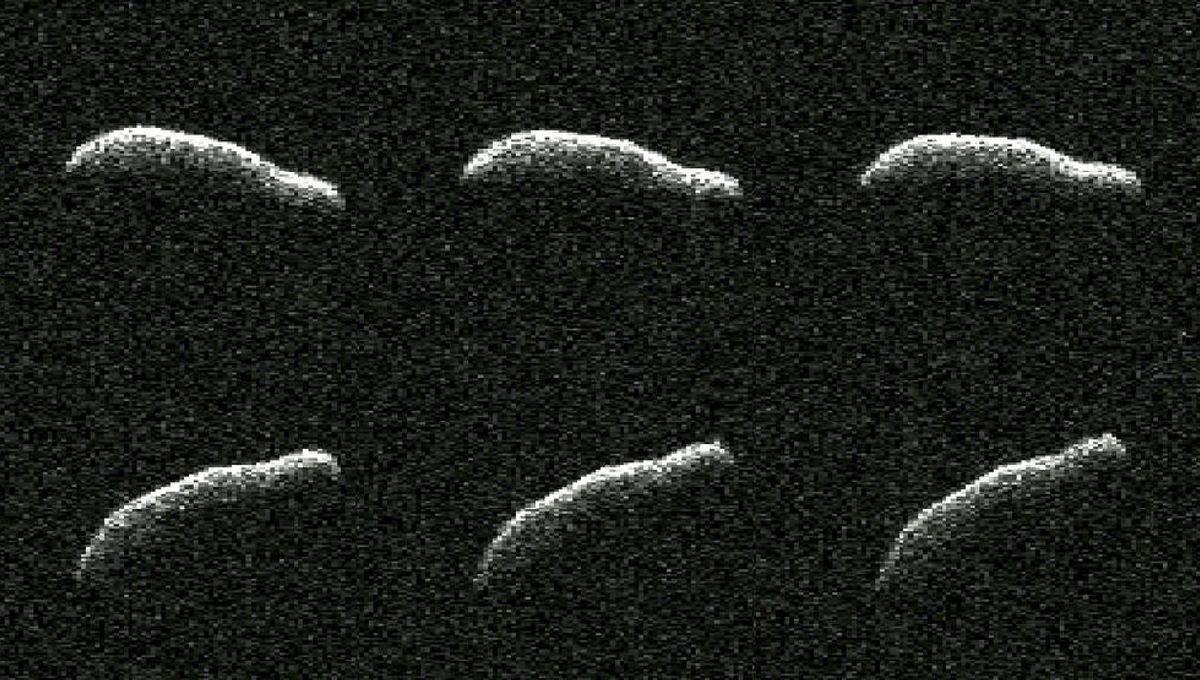
On February 3, asteroid 2011 AG5 flew past Earth at a distance of 1.8 million kilometers (1.1 million miles). That’s about five times the Earth-Moon distance – far enough to be very safe, but close enough to do some cool science. Goldstone Solar System Radar was used to study the shape, rotation, size, and surface details, and it is a very weird object.
The asteroid is 500 meters (1,600 feet) long but only 150 meters (500 feet) wide. The NASA team says that the dimensions are comparable to the Empire State Building (with the skyscraper being shorter with a narrower base). To us, it looks more like a cosmic eggplant!
“Of the 1,040 near-Earth objects observed by planetary radar to date, this is one of the most elongated we’ve seen,” Lance Benner, principal scientist at JPL who helped lead the observations, said in a statement.
The asteroid would appear to the unaided eye as dark as charcoal, but it has slightly different coloration due to several features about 12 meters (40 feet) across. It rotates slowly, taking about nine hours to spin around its axis.
This asteroid is a Near-Earth object, meaning that it comes close to our planet. Thanks to the observations, scientists have refined its orbital expectation. It goes around the Sun every 621 days and there is no current risk for it to hit our planet.
“Interestingly, shortly after its discovery, 2011 AG5 became a poster-child asteroid when our analysis showed it had a small chance of a future impact,” said Paul Chodas, the director of the Center for Near Earth Object Studies at JPL. “Continued observations of this object ruled out any chance of impact, and these new ranging measurements by the planetary radar team will further refine exactly where it will be far into the future.”
The next close passage of 2011 AG5 is expected on February 4, 2040, when it will fly at a distance of 1.1 million kilometers (670,000 miles).
Source Link: Asteroid That Flew Past Earth Is The Most Oblong Known